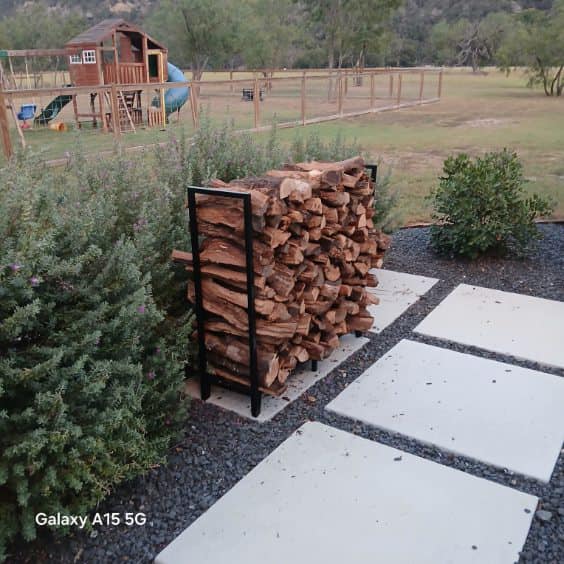
Keep the Home Fires Burning: A Comprehensive Guide to Firewood Storage
Share
Nothing beats the cozy warmth of a crackling fire, whether it's in your fireplace at home, a wood stove in your cabin, or a campfire under the stars. But before you can enjoy those flames, you need to properly store your firewood. This guide covers everything you need to know about storing firewood, from choosing the right location to protecting it from the elements, ensuring you have dry, seasoned wood ready when you need it.
Section 1: Choosing the Right Storage Location
-
Outdoor Storage: The most common method is storing firewood outdoors. The key is to choose a spot that's:
- Well-ventilated: Airflow is crucial for drying and seasoning wood.
- Away from structures: Keep your woodpile at least 30 feet away from your house, shed, or other buildings to minimize the risk of pests and fire hazards.
- Off the ground: Use a pallet, rack, or even just some scrap wood to elevate the woodpile, preventing rot and promoting air circulation.
- Sunny: A sunny location helps dry the wood faster.
-
Indoor Storage: While not ideal for large quantities, you can store some firewood indoors near your fireplace or stove. Just be mindful of pests and keep it away from flammable materials.
Building Your Woodpile
- Stacking Methods: There are various ways to stack firewood, but the goal is always the same: maximize airflow and stability.
Some popular methods for stacking wood at home include:
-
- Crib stacking: Interlocking rows of wood create a stable structure.
- Lean-to stacking: Leaning wood against a support (like a fence) can be quick, but it's less stable.
- Purpose built firewood rack: Gives you the ability to stack your wood neatly, worry free, and the ability to measure just how much you can store.
- Covering Your Woodpile: While airflow is essential, you also need to protect your wood from rain and snow. Covering the top of the pile with a tarp or sheet of plywood is sufficient. Avoid completely covering the sides, as this will trap moisture.
Seasoning Your Firewood
- The Importance of Seasoning: "Seasoning" refers to the process of drying out freshly cut wood. Dry wood burns hotter and cleaner, producing less smoke and creosote.
- How Long to Season: The seasoning time varies depending on the type of wood and your climate, but generally, it takes 6-12 months.
- Signs of Seasoned Wood: Seasoned wood is lighter, has cracks in the end grain, and makes a hollow sound when struck.
Protecting Your Firewood from Pests
- Inspecting Your Wood: Before stacking, inspect your firewood for signs of insects or rot.
- Removing Bark: Removing the bark can help deter pests.
- Storing Away from the Ground: As mentioned earlier, elevating your woodpile is crucial for pest control.
Proper firewood storage is essential for ensuring you have a ready supply of dry, seasoned wood for your fires. By following these tips, you can keep your woodpile organized, protected, and pest-free, so you can enjoy the warmth and ambiance of a fire whenever you desire.
Check out our premium firewood, if you're located in the Texas hill country or the surrounding areas we offer pick up and delivery. You can find out more on the website got-firewood.com
